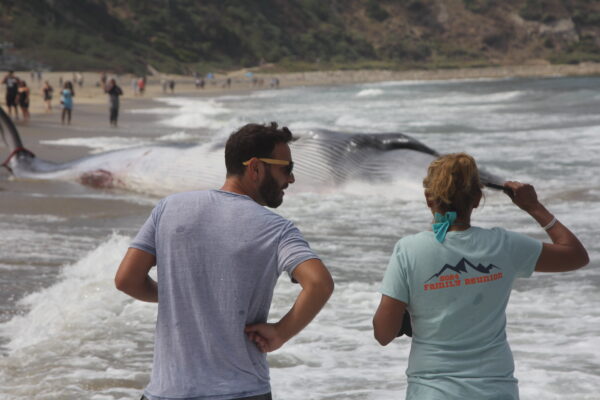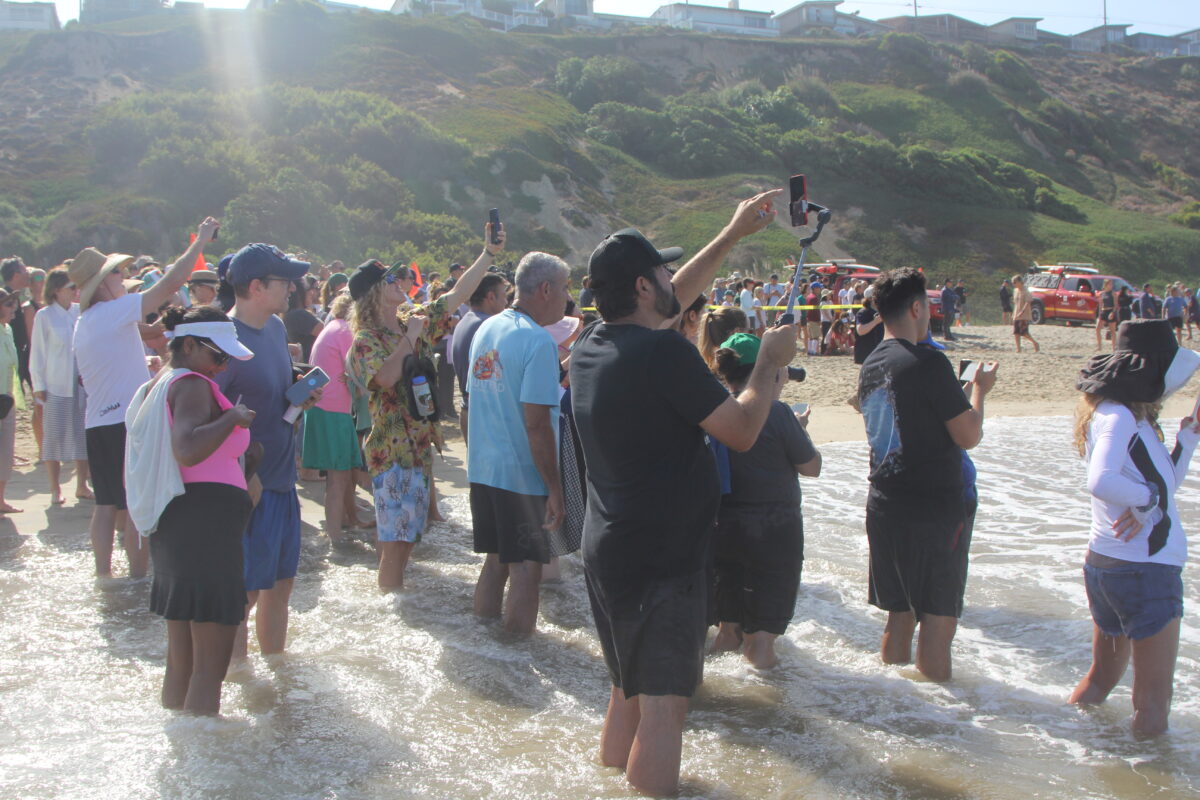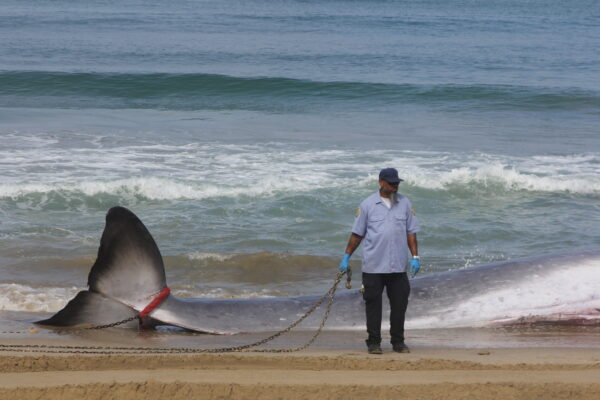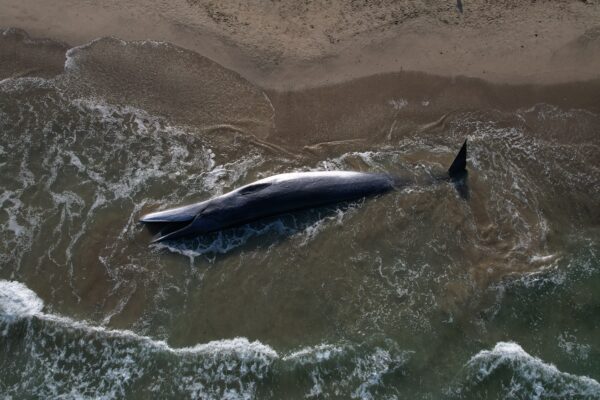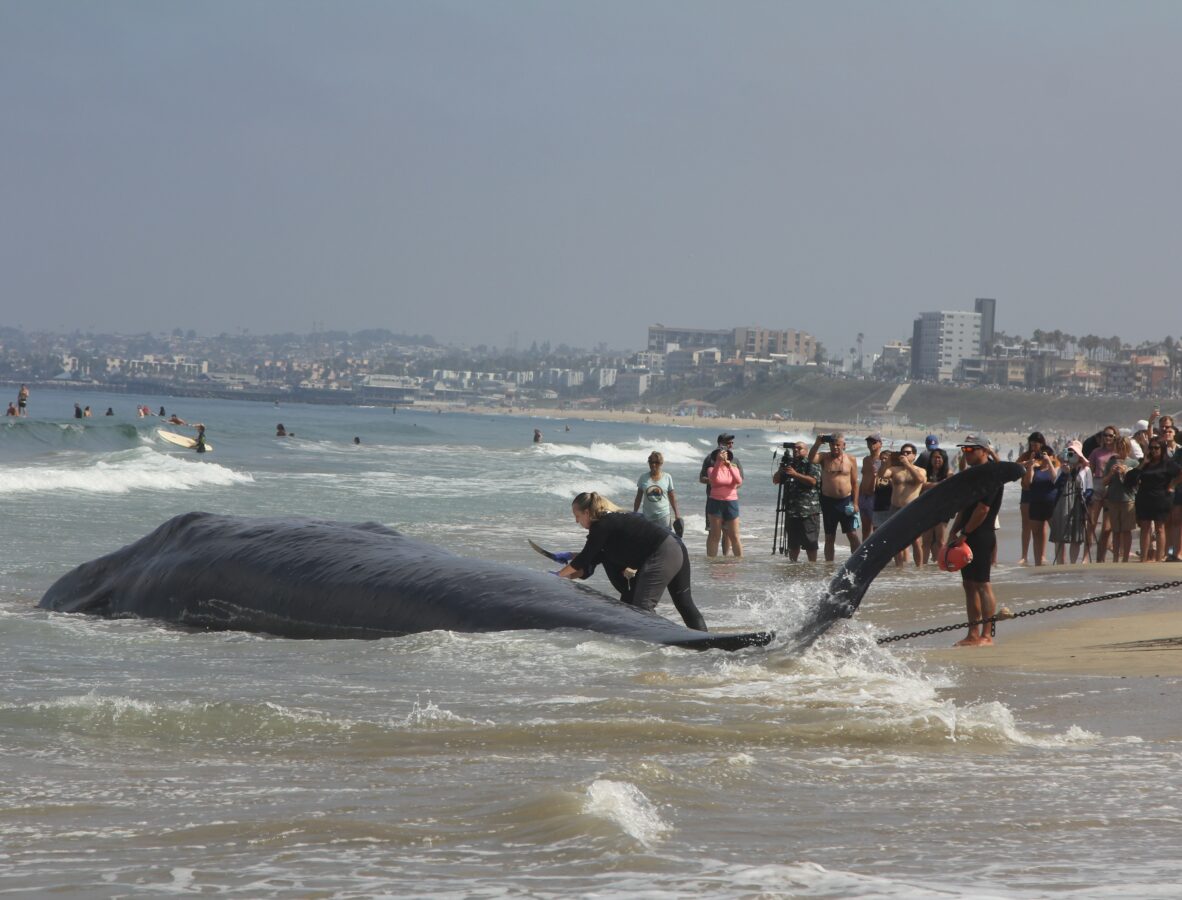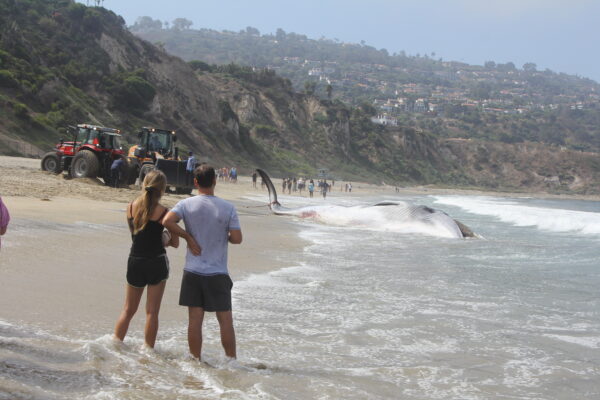by Garth Meyer
The body of a 51-foot juvenile fin whale was towed out to sea early Sunday afternoon, Aug. 11, after it washed up on Torrance Beach still alive the evening before.
Once reported, marine animal agencies converged, performing an abbreviated necropsy in the morning – an animal autopsy – while careful of the encroaching tide and the danger of the 20-ton whale shifting in the surf.
Workers from L.A. County Division of Beaches and Harbors attached a chain to the animal’s tail, and attempted to pull it further up the sand with two tractors, but they only spun the wheels.
Veterinarians cut away tissue samples, and openings in the whale to be sure it would sink once taken back into the ocean.
“If you don’t have cuts (the body) will float and bloat,” said John Warner, CEO of Marine Mammal Care Center (San Pedro). “Whale carcasses create whole, rich ecosystems which feed critters for years. It can go on for 10 to 20 years, depending on the size of the whale.”
“A whale fall,” said Alisa Schulman-Janiger, a member of NOAA (National Oceanic and Atmospheric Association) Stranding Response Team. “It’s like a Thanksgiving feast. Animals come from miles away just to hang out and feed there. Crabs, hagfish, there are multiple species of worms only found in the bones of dead whales.”
The male fin whale at Torrance Beach was in poor health, Warner said. It was thinner than it should be and had “quite a few abscesses,” which are common, but not in that number.
“It would have washed up because it was not strong enough to swim,” he said.
An endangered species, fin whales are the second largest animals on Earth, second only to blue whales.
“It will take a while for all of the (necropsy) results to come back,” Warner said.
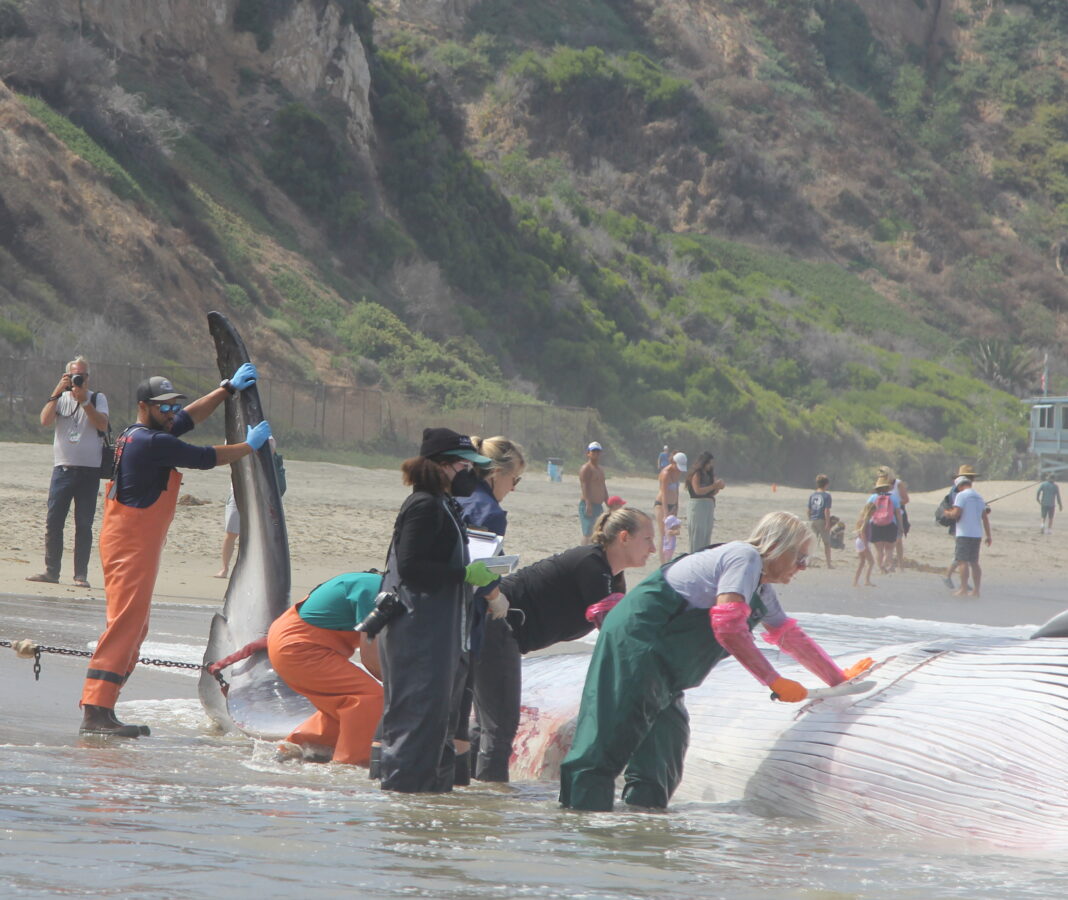
The efforts with the tractors were to allow veterinarians to take safer samples.
A large crowd watched as L.A. County Lifeguards kept it behind a rope. A KTLA television reporter reapplied her makeup in the rearview mirror of their truck.
“Hopefully we’ll learn something about what caused the whale’s death, but a lot of times you don’t ever get a smoking gun,” Warner said. “Many of the veterinarians doing the necropsy had never seen a fin whale.”
Tissue samples included muscle, organs, skin and blubber.
“There was a lot of blood in the chest cavity, which could be caused by just rolling in the surf,” Schulman-Janiger said. “There was no sign of propeller cuts, or anything like that.”
The whale appeared in the surfline about 6:30 p.m. Saturday, still spouting and moving its tail. A fire department drone helped veterinarians determine it died about 8:30 p.m.
“It’s hard to communicate to people that there is nothing that they can do,” Warner said. “But people were extremely respectful.”
On Sunday morning, when the veterinarians’s limited work was complete, the lifeguard rescue boat, Baywatch Redondo, ran a line through an old firehose – so it would be less abrasive – and tied it around the whale’s fluke/tail.
Once the tide had risen enough, the boat aimed for the open ocean.
“Slow, constant power, and we pulled the whale off of the beach,” said Pono Barnes, L.A. County Lifeguards captain.
He credited a nudge from a Department of Beaches and Harbors front loader. Baywatch towed the whale to a spot over the Redondo Beach submarine canyon, and untied the firehose. The remains sank into the 1,500 foot-deep water.
The last fin whale to wash up in Southern California was a juvenile female in San Diego in December 2023. It was initially found alive with killer whale tooth rakes on it. ER
